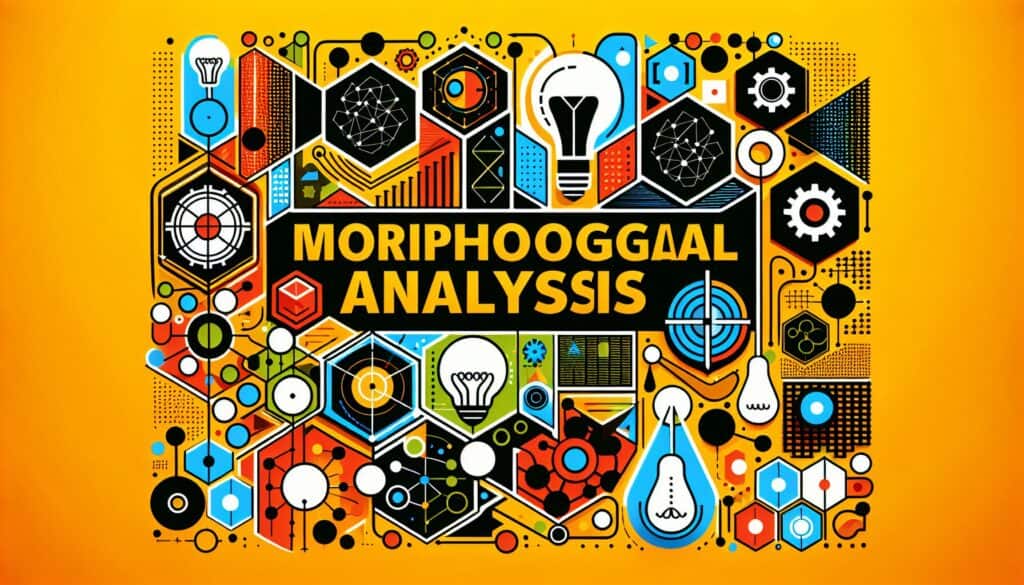一种解决问题和构思的技术,包括将复杂的问题或系统分解为基本参数或维度,然后生成所有可能的组合,以找到新的解决方案。
- 方法: 人体工程学
形态分析

- 创造力, 增材制造设计(DfAM), 优化设计, 设计思维, 构思, 创新, 解决问题的技巧, 系統建模語言(SysML), 价值评估工程(VE)
形态分析
- 创造力, 增材制造设计(DfAM), 优化设计, 设计思维, 构思, 创新, 解决问题的技巧, 系統建模語言(SysML), 价值评估工程(VE)
目标
如何使用
- 确定产品/问题的关键特征或功能。针对每个特征,生成可能的变体或实现方式列表。然后对这些变体的组合进行系统探索。
优点
- 为探索各种潜在的解决方案或配置提供了一种系统的方法;可以产生创新和意想不到的想法;有助于确保考虑到所有的可能性。
缺点
- 如果参数或变化较多,可能会变得非常复杂,并产生大量组合;评估所有组合可能不切实际;需要明确定义参数。
类别
- 构思, 解决问题, 产品设计
最适合:
- 通过将复杂问题分解为核心层面并进行组合,系统地构建和探索所有可能的解决方案。
Morphological Analysis is frequently utilized in industries such as automotive design, aerospace engineering, and consumer electronics, where the intricacies of product features and functions necessitate thorough examination. During the conceptual phase of projects, teams typically comprising engineers, designers, and product managers initiate this methodology to dissect the multifaceted nature of challenges they face. By identifying the fundamental features of a product or problem, such as size, material, or functionality, and generating variations for each, teams can explore a vast array of combinations that might lead to groundbreaking solutions. For example, in automotive design, variations might include different types of propulsion systems (electric, hybrid, traditional combustion) combined with varied body styles (sedan, SUV, coupe), which can yield numerous innovative vehicle concepts. This structured exploration fosters creativity, facilitating the emergence of previously unconsidered solutions that enhance product appeal while addressing user needs or environmental concerns. Workshops and collaborative sessions are often organized around this methodology, allowing diverse input and interdisciplinary cooperation, which not only broadens the exploration process but also aligns the team’s focus on achievable, coherent outcomes.
该方法的关键步骤
- Identify the core dimensions of the problem or product.
- Define key features or functions related to each dimension.
- Generate a comprehensive list of possible variations for each feature.
- Create a morphological matrix to combine variations systematically.
- Explore different configurations by analyzing the matrix.
- Select and evaluate promising combinations for feasibility and relevance.
- Refine configurations based on feedback and insights gained.
- Document the selected combinations for further development and prototyping.
专业提示
- Utilize clustering techniques during the variation generation phase to identify synergies among features, enabling stronger combinations that may not be immediately apparent.
- Integrate feedback loops from stakeholders at various stages of the analysis to validate and refine the combinations, ensuring relevance and applicability to real-world scenarios.
- Employ simulation tools to visualize and test the feasibility of the selected combinations, allowing for quicker iterations and adjustments before moving to physical prototypes.
历史背景
1949
1950
1950
1960
1960
1960
1960
1940
1950
1950
1958
1960
1960
1960
1960
(如果日期不详或不相关,例如 "流体力学",则对其显著出现的时间作了四舍五入的估计)。















相关文章
METS 卡路里计算器
元分析
信息映射
心理模型图
可接受的最大推力和拉力
物料需求计划(MRP)